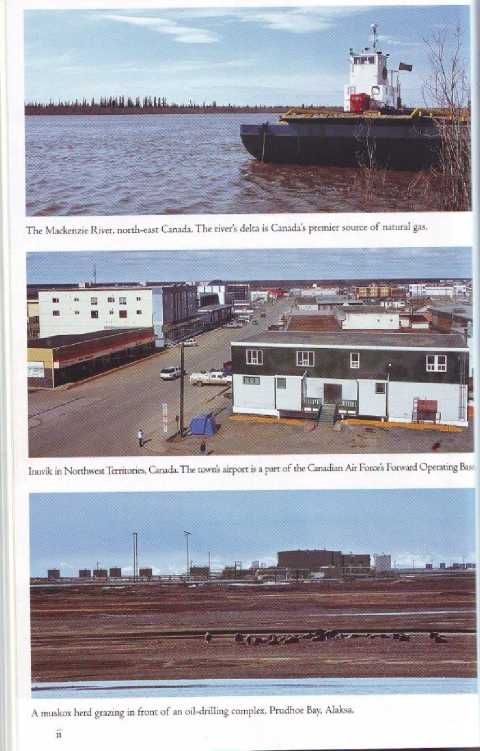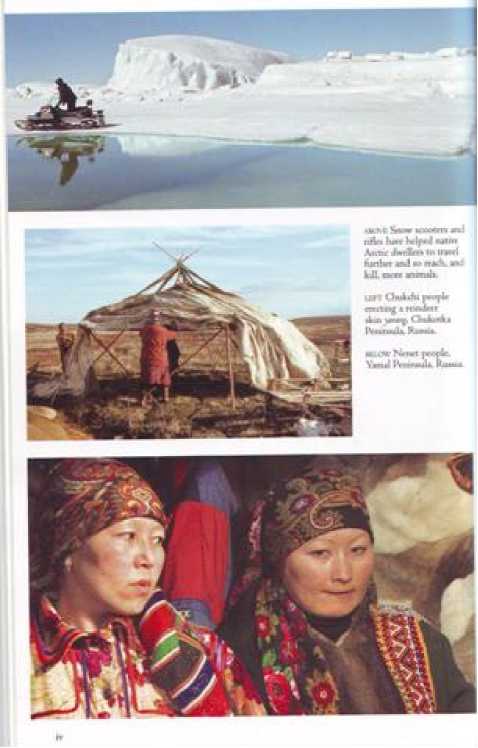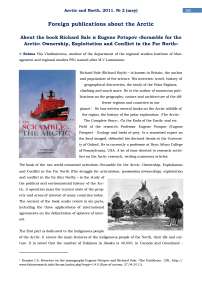About the book Richard Sale и Eugene Potapov «Scramble for the Arctic: Ownership, Exploitation and Conflict in the Far North»
Автор: Bobina Julia
Журнал: Arctic and North @arctic-and-north
Рубрика: Foreign publications about Arctic
Статья в выпуске: 2, 2011 года.
Бесплатный доступ
Короткий адрес: https://sciup.org/148320518
IDR: 148320518
Текст статьи About the book Richard Sale и Eugene Potapov «Scramble for the Arctic: Ownership, Exploitation and Conflict in the Far North»
Richard Sale (Richard Sayle) – is known in Britain, the author and popularizer of the science. His interests: travel, history of geographical discoveries, the study of the Polar Regions, climbing and much more. He is the author of numerous publications on the geography, nature and architecture of the different regions and countries in our planet 1. He has written several books on the Arctic wildlife of the region, the history of the polar exploration: «The Arctic: The Complete Story», «To the Ends of the Earth» and etc.
Field of the research Professor Eugene Potapov (Eugene Potapov) - Ecology and birds of prey. Is a renowned expert on the facol imaged, defended his doctoral thesis at the University of Oxford. He is currently a professor at Bryn Athyn College of Pennsylvania, USA. A lot of time devoted to research activities on the Arctic research, writing numerous articles.
The book of the two world-renowned scientists «Scramble for the Arctic: Ownership, Exploitation and Conflict in the Far North (The struggle for articulation: possession (ownership), exploitation and conflict in the far (far) North) – is the study of the political and environmental history of the Arctic, it operation (use) the current state of the property and areas of interest of many countries today. The content of the book under review is six parts, including the three applications of international agreements on the delimitation of spheres of interest.
The first part is dedicated to the indigenous people
of the Arctic. It covers the main features of the indigenous people of the North, their life and culture. It is noted that the number of Eskimos in Alaska is 40,000, in Canada and Greenland - about 20,000. The authors also mention the Russian coast-dwellers who first met with the Nenets only in the XI century. In the middle of the XVI century, Russian, capturing Siberia, began to move to the West. Be-reaching Bering Sea, they established contact with the indigenous peoples of the Arctic coast. In the general, the work of a lot of attention is paid to the establishment of contacts and the development of the relations with the indigenous people of the Far North. The authors do not accidentally reveal the life of northern ethnic groups in the first chapter, as this topic is of the great interest to the public.
The second part of the book in the content is the volume. It tells the story of the possession and the study of the Arctic, from Iceland, Greenland and finishing. In the third part of the study the exploitation of the Arctic region, the wildlife. Each year, the death of animals in the Arctic waters rise. This is due to the extraction of oil, gas and non-ferrous metals. Animals of the Arctic and sub-Arctic -one of the most important and eco- nomically valuable resources. In the Arctic region, home to many rare species of animals, the fate of which is alarming. The authors conclude that human activity is causing great harm to the region.
The second part of the book in content is the volume. It tells the story of the possession and study of the Arctic, from Iceland, Greenland and finishing. In the third part of the study the exploitation of the Arctic region, the wildlife. Each year, the death of animals in the Arctic waters rise. This is due to the extraction of oil, gas and non-ferrous metals. Animals of the Arctic and sub-Arctic - one of the most important and economically valuable resources. In the Arctic region, home to many rare species of the animals, the fate of which is alarming. The authors conclude that human activity is causing great harm to the region.
The fifth part is devoted to the work of the second wave of exploitation of the Arctic related to oil and gas, non-ferrous metals mining. In the latter, the sixth part of the story-exists about the future of the Arctic region, the melting of glaciers, global warming. The authors note that in the age of globalization, the Arctic region growing importance, as there where huge deposits of resources. On the map, literally change the global warming, the Arctic will be the property of one of the defining issues of the next decade.
Richard Sale and Eugene Potapov emphasize that before you predict the future, it is necessary to study in detail the past Arctic. Therefore, the book would clearly stand out as the two aspects. First, the history of the Arctic, from hiking the ancient indigenous people. Second, the projected future of the Arctic region, marked political and environmental threats. The Arctic is particularly vulnerable because of the rapid changes in climate, which in turn raises issues of access to the mineral wealth of the polar region and the possibility of a conflict there

The book Richard Sale and Eugene Potapov has a lot of photos that enables the reader to visually explore the Arctic and its life.



